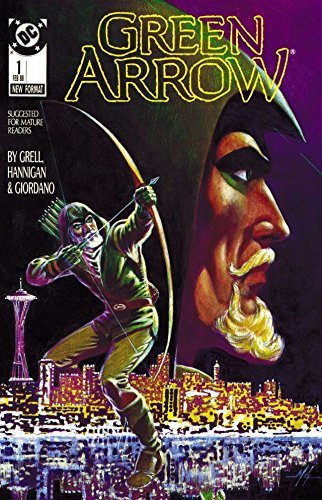
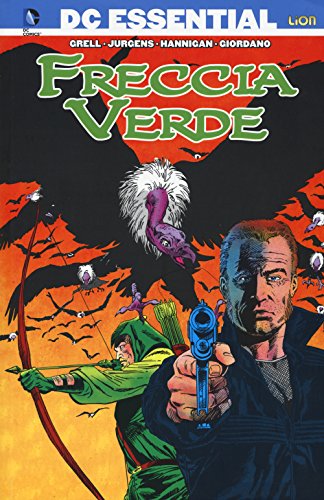

Books in series

Green Arrow (1988-1998) #1
1988

Freccia Verde, Vol 2
1988

Green Arrow (1988-1998) #7
1988

Green Arrow (1988-1998) #8
1988
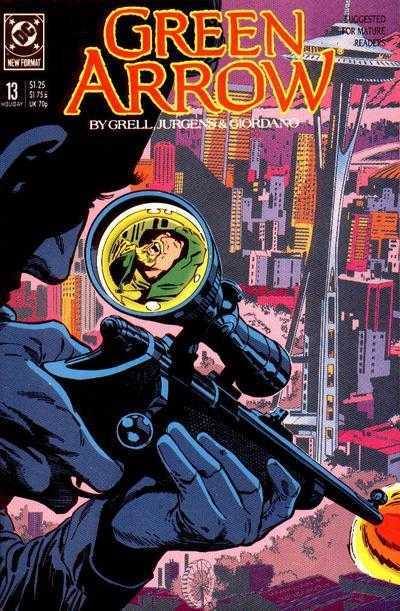
Green Arrow (1988-1998) #13
1988
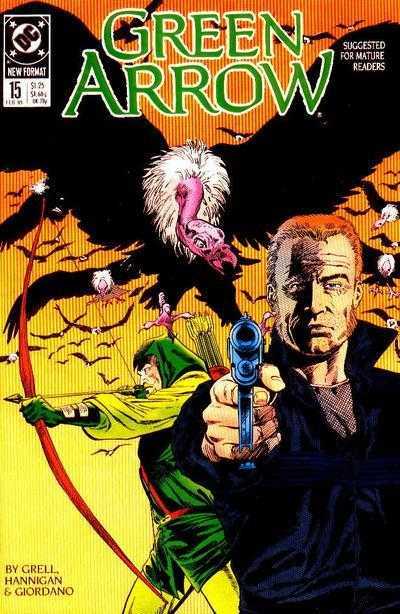
Green Arrow (1988-1998) #15
1988
Green Arrow #17
2025

Green Arrow (1988-1998) #21
1989
Green Arrow #25
1989
Green Arrow #26
1989
Green Arrow #27
2025
Green Arrow #30
1990
Green Arrow #31
1990
Green Arrow #35
2025
Green Arrow #37
1990
Green Arrow #39
1990
Green Arrow #42
1991
Green Arrow #44
1991
Green Arrow #45
1991
Green Arrow #46
1991
Green Arrow #49
1991
Green Arrow #50
1991
Green Arrow #53
1991
Green Arrow #54
1991
Green Arrow #56
2025
Green Arrow #61
1992
Green Arrow #62
1992
Green Arrow #64
1992
Green Arrow #65
2025
Green Arrow #67
1992
Green Arrow #68
2025
Green Arrow #69
2025
Green Arrow #73
1993
Green Arrow #79
2025
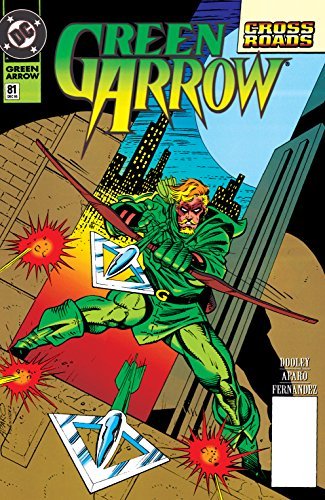
Green Arrow (1988-1998) #81
1993
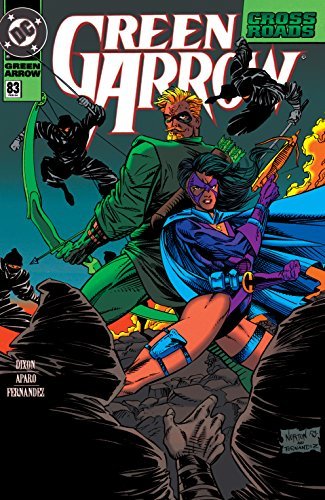
Green Arrow (1988-1998) #83
1994
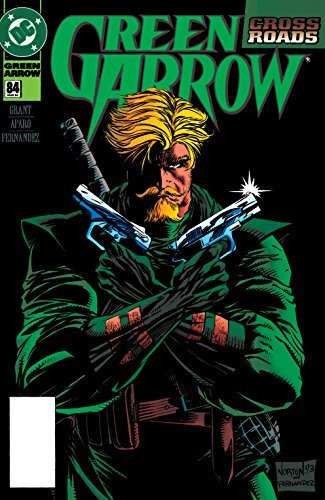
Green Arrow (1988-1998) #84
1994
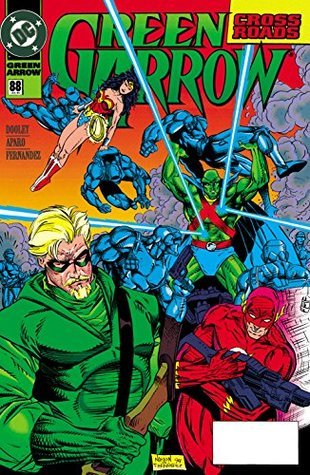
Green Arrow (1988-1998) #88
1994
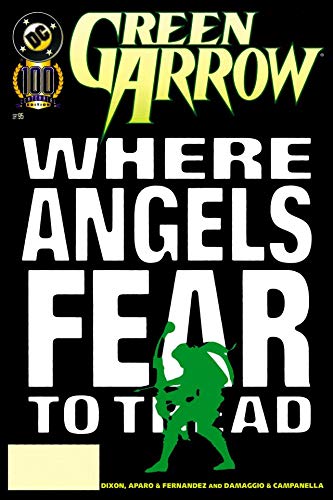
Green Arrow (1988-1998) #100
1995
Green Arrow #101
2025
Green Arrow #103
2025

Green Arrow (1988-1998) #110
1996

Green Arrow (1988-1998) #111
1996

Green Arrow (1988-1998) #114
1996

Green Arrow (1988-1998) #115
2025

Green Arrow (1988-1998) #125
1997

Green Arrow (1988-1998) #126
1997

Green Arrow (1988-1998) #136
1988
Green Arrow (1988-1998) #137
1998
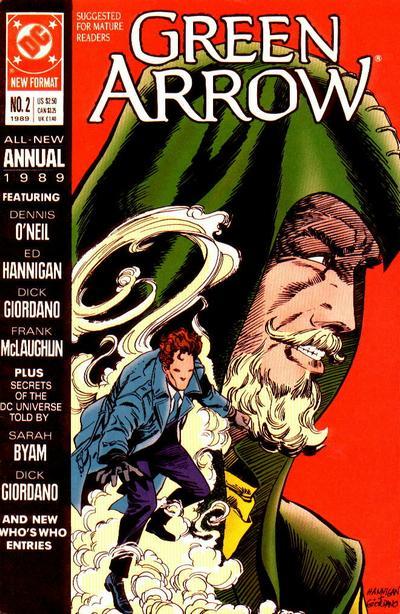
Green Arrow (1988-1998) Annual #2
1989
Green Arrow (1988-1998) Annual #3
1990
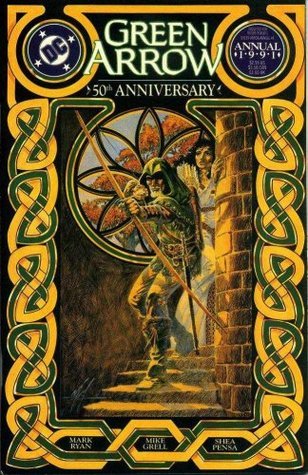
Green Arrow (1988-1998) Annual #4
2025
Green Arrow (1988-1998) Annual #6
2025

Green Arrow (1988-1998) Vol. 1
Hunters Moon
1988

Green Arrow, Vol. 2
Here There Be Dragons
1989

Green Arrow
A Celebration of 75 Years
2016
Authors

Kevin Patrick Smith is an American screenwriter, director, as well as a comic book writer, author, and actor. He is also the co-founder, with Scott Mosier, of View Askew Productions and owner of Jay and Silent Bob's Secret Stash comic and novelty store in Red Bank, New Jersey. He also hosts a weekly podcast with Scott Mosier known as SModcast. He is also known for participating in long, humorous Q&A Sessions that are often filmed for DVD release, beginning with An Evening with Kevin Smith. His films are often set in his home state of New Jersey, and while not strictly sequential, they do frequently feature crossover plot elements, character references, and a shared canon in what is known by fans as the "View Askewniverse", named after his production company View Askew Productions. He has produced numerous films and television projects, including Clerks, Mallrats, Chasing Amy, Dogma, Jay and Silent Bob Strike Back and Clerks II.

Dan Jurgens is an American comic book writer and artist. He is best known for creating the superhero Booster Gold, and for his lengthy runs on the Superman titles Adventures of Superman and Superman (vol. 2), particularly during The Death of Superman storyline. Other series he has been associated with include The Sensational Spider-Man (Vol. 1), Thor (vol. 2), Captain America (vol. 3), Justice League America, Metal Men, Teen Titans (vol. 2), Zero Hour, Tomb Raider: The Series, Aquaman (vol. 3), and the creator of DC Comics' imprint Tangent. Jurgens' first professional comic work was for DC Comics on Warlord #63. He was hired due to a recommendation of Warlord-series creator Mike Grell who was deeply impressed by Jurgens' work after being shown his private portfolio at a convention. In 1984, Jurgens was the artist for the Sun Devils limited series (July 1984 - June 1985), with writers Gerry Conway and Roy Thomas. Jurgens would make his debut as a comic book writer with Sun Devils he began scripting from Conway's plots with #8 and fully took over the writing duties on the title with #10. In 1985, Jurgens created the character Booster Gold, who became a member of the Justice League. His first work on Superman was as penciller for Adventures of Superman Annual #1 (1987). In 1989, Jurgens began working full-time on the character when he took over the writing/pencilling of the monthly Adventures of Superman. Dan Jurgens was the penciller of the 1990–1991 limited series Armageddon 2001 and co-created the hero Waverider with Archie Goodwin. In 1991 Jurgens assumed the writing/pencilling of the main Superman comic book, where he created a supporting hero named Agent Liberty. During his run on Superman, Dan created two major villains, Doomsday and the Cyborg. Doomsday was the main antagonist in the Death of Superman storyline. Jurgens wrote and drew Justice League America for about one year and in 1993 pencilled the Metal Men four-issue miniseries, which was a retcon of their origin story. Jurgens wrote and pencilled the 1994 comic book miniseries and crossover Zero Hour. He wrote and penciled layouts (with finished art by Brett Breeding) to the Superman/Doomsday: Hunter/Prey miniseries, which was a follow-up to the successful Death of Superman storyline. In 1995 Jurgens and Italian artist Claudio Castellini worked on the highly publicized crossover Marvel vs DC. In the same year, he gave up the pencilling duties on Superman. Jurgens scripted and provided layout art for the Superman vs. Aliens miniseries. The story was about a battle between Superman and the aliens created by H. R. Giger (a.k.a. the Xenomorphs), from the Alien film series. It was co-published by Dark Horse Comics and DC Comics in 1995. In January 1996, Jurgens was writer and penciller of the new Spider-Man series, The Sensational Spider-Man (Vol. 1), at Marvel Comics. The title was initially conceived to be the flagship showcase for the new Ben Reilly Spider-Man (it replaced the Web of Spider-Man series). The initial seven issues (#0–6, January–July 1996) were written and pencilled by Jurgens. Jurgens pushed strongly for the restoration of Peter Parker as the true Spider-Man and plans were made to enact this soon, but Bob Harras, the new Editor-in-chief, demanded the story be deferred until after the Onslaught crossover. Jurgens had by this stage become disillusioned with the immense amount of group planning and constant changes of ideas and directions and took this as the last straw, resigning from the title. In a past interview several years after his Spider-Man run, Jurgens stated that he would like to have another chance on the character, since his run was with the Ben Reilly character during the Spider-Man Clone Saga, and not Peter Parker. Jurgens had also written and pencilled Teen Titans (vol. 2) for its entire two year, 24 issue run. New Teen Titans co-creator George Pérez came on board on this incarnation of the Titans as inker for the se

Brad Meltzer is the #1 New York Times bestselling author of The Inner Circle, The Book of Fate, and nine other bestselling thrillers including The Tenth Justice, The First Counsel, The Millionaires, and The President’s Shadow. His newest book, The Escape Artist, debuted at #1 on the bestseller list. In addition to his fiction, Brad is one of the only authors to ever have books on the bestseller list for Non-Fiction (History Decoded), Advice (Heroes for My Son and Heroes for My Daughter), Children’s Books (I Am Amelia Earhart and I Am Abraham Lincoln) and even comic books (Justice League of America), for which he won the prestigious Eisner Award. His newest thriller, The Escape Artist, introduces Nola and Zig, brand new characters in a setting that will blow your mind (you won't believe where the government let Brad go). For now, we'll say this: Nola is dead. Everyone says she's dead. But Jim "Zig" Zigarowski just found out the truth: Nola is alive. And on the run. Together, Nola and Zig will reveal a centuries old secret that traces back the greatest escape artist of all: Harry Houdini. Raised in Brooklyn and Miami, Brad is a graduate of the University of Michigan and Columbia Law School. The Tenth Justice was his first published work and became an instant New York Times bestseller. Dead Even followed a year later and also hit the New York Times bestseller list, as have all eight of his novels. The First Counsel came next, which was about a White House lawyer dating the President’s daughter, then The Millionaires, which was about two brothers who steal money and go on the run. The Zero Game is about two Congressional staffers who are – literally – gambling on Congress. The Book of Fate, is about a young presidential aide, a crazed assassin, and the 200 year-old code created by Thomas Jefferson that ties them together. For authenticity, The Book of Fate, was researched with the help of former Presidents Clinton and Bush. The Book of Lies, is about the missing murder weapon that Cain used to kill Abel, as well as the unsolved murder of Superman creator Jerry Siegel’s father. Brad is one of the only people to interview Jerry Siegel’s family about the murder and, with his charitable site www.OrdinaryPeopleChangeTheWorld.com, has been the driving force behind the movement to repair the house where Superman was created. His book The Inner Circle (and its sequels, The Fifth Assassin and The President’s Shadow) is based the idea that George Washington’s personal spy ring still exists today. A young archivist in the National Archives finds out the spy ring is still around. He doesn’t know who they work for—but the greatest secret of the Presidency is about to be revealed. While researching the book, former President George HW Bush also gave Brad, for the very first time, the secret letter he left for Bill Clinton in the Oval Office desk. Oh, and yes, Brad was recruited by the Department of Homeland Security to brainstorm different ways that terrorists might attack the US. His books have spent over a year on the bestseller lists, and have been translated into over 25 languages, from Hebrew to Bulgarian. Brad has played himself as an extra in Woody Allen’s Celebrity, co-wrote the swearing in oath for AmeriCorps, the national service program, and earned credit from Columbia Law School for writing his first book, which became The Tenth Justice. Before all of that, he got 24 rejection letters for his true first novel, which still sits on his shelf, published by Kinko’s. Brad currently lives in Florida with his wife, who’s also an attorney.

Born February 12th, 1970 and raised on Long Island in New York, Judd began cartooning professionally at 16 with a single-paneled strip called Nuts & Bolts. This ran weekly through Anton Publications, a newspaper publisher that produced town papers in the Tri state area. He was paid 10 dollars a week. In August of 1988, Judd began attending the University of Michigan, Ann Arbor bringing Nuts & Bolts with him, but turning it into a four-panel strip and creating a cast of characters to tell his tales. Nuts & Bolts ran in The Michigan Daily 5 days a week from my freshman year (freshperson, or first-year student, as they liked to say at U of M), until graduation in the spring of 1992. A collection of those college years Nuts & Bolts was published in Ann Arbor. Watching the Spin-Cycle: the Nuts & Bolts collection had a small run of a thousand books a couple of months before graduation. They sold out in about 2 weeks and there are no plans to republish it. Before graduation he accepted a development deal with a major syndicate (syndicates are the major league baseball of comic strips. They act as an agent or broker and sell comic strips to newspapers). Judd spent the next year living in Boston, and developing his strip. The bottom dropped out when the syndicate decided that they were not going to pursue Nuts and Bolts for syndication and were terminating his development contract. Crushed and almost broke, he moved back in with his parents in July 1993. Getting by doing spot illustration jobs, Judd actually had Nuts & Bolts in development with Nickelodeon as an animated series. At one point he even turned the human characters into mice (Young Urban Mice and Rat Race were the working titles). In August of 1993 he saw an ad on MTV for The Real World III, San Francisco. For those who may not know, The Real World is a real-life documentary soap opera, where 7 strangers from around the country are put up in a house and filmed for six months. You get free rent, free moving costs, you get to live in San Francisco, and get to be a famous pig on television. The "Audition process," was everything from doing a video, to filling out a 15 page application, to in-person interviews with the producers, to being followed around and filmed for a day. 6 months and 6 "levels" later, Judd was in. On February 12th 1993, he moved into a house on Russian Hill and they began filming. Along the way Nuts & Bolts was given a weekly spot in the San Francisco Examiner. This WHOLE deal was filmed and aired for the show. They moved out in June of 1994, a couple of days after O.J.'s Bronco chase in L.A. The show began airing a week later. Along with the weekly San Francisco Examiner gig, Judd began doing illustrations for The Complete Idiot's Guide series through QUE Books. Since then, Judd has illustrated over 300 Idiot's Guides and still does the cartoons for the computer oriented Idiot's Guides line. A collection of the computer related titles' cartoons was published in 1997 as Terminal Madness, The Complete Idiot's Guide Computer Cartoon Collection. Not too long after the show had been airing, Judd's roommate from the show and good friend, AIDS activist Pedro Zamora, took ill from AIDS complications. Pedro was to begin a lecture tour in September. Judd agreed to step in and speak on his behalf until he was well enough to do so again. In August of 1994, Pedro checked into a hospital and never recovered. Pedro passed away on November 11, 1994. He was 22. Judd continued to lecture about Pedro, Aids education and prevention and what it's like to live with some one who is living with AIDS for most of 1995. Speaking at over 70 schools across the country, Judd describes it as, "...the most fulfilling and difficult time in my life." But time and emotional constraints forced him to stop lecturing. In May of 1995 Judd found the weekly Nuts & Bolts under-whelming and decided to give syndication another go. Re-vamping Nuts & Bolts

Mike Grell (born 1947) is a comic book writer and artist. Grell studied at the University of Wisconsin-Green Bay, the Chicago Academy of Fine Art, and took the Famous Artists School correspondence course in cartooning. His entry into the comics industry was in 1972, as an assistant to Dale Messick on the Brenda Starr comic strip. In 1973 Grell moved to New York, and began his long relationship with DC Comics. His first assignment at DC was on Superboy and the Legion of Super-Heroes, a high-profile assignment for an artist with no prior experience illustrating a monthly comic book. Grell says he got that job because he was walking in the editor's door to ask for work, literally, as the previous artist was walking out the door, having just quit. These stories were written by Cary Bates and Jim Shooter. The Bates/Grell/Shooter run on the title is very well-regarded today by Superboy/Legion fans, who consider it one of the high-water marks in the character/team's history. Grell's work on SATLOSH is widely thought to be some of the best beefcake/cheesecake ever committed to comic book pages, and is affectionately referred to as the 'disco Legion' in retrospect by fans of the title. A writer as well as artist, Grell cemented his status as a fan-favorite with his best-known creation, The Warlord, one of the first sword and sorcery comics, and reportedly the best-selling title published by DC Comics in the late-1970s. The character first appeared in 1st Issue Special #8 (Nov 1975) and was soon given his own ongoing title (The Warlord #1, Jan/Feb 1976). In this book, Air Force pilot Travis Morgan crash-lands in the prehistoric "hidden world" of Skartaris (a setting highly influenced by Jules Verne's A Journey to the Center of the Earth and Edgar Rice Burroughs' Pellucidar). For years thereafter, Morgan engages in adventures dressed only in a winged helmet, wristbands, boots, and breechclout, and armed with a sword and (years before Dirty Harry handled one) a .44 Auto Mag. At DC, Grell also worked on titles such as Aquaman, Batman, and the Phantom Stranger, and with writer Dennis O'Neil on the re-launch of the Green Lantern/Green Arrow series in 1976. [edit] Tarzan Grell wrote and drew the Tarzan comic strip from July 19, 1981 to February 27, 1983 (except for one strip, February 13, 1983, by Thomas Yeates). These strips were rerun in newspapers in 2004 - 2005. [edit] First Comics: Jon Sable Freelance and Starslayer Cover to Jon Sable Freelance #7. Art by Mike Grell.Through the 1980s Grell developed creator-owned titles such Jon Sable Freelance and Starslayer. Jon Sable Freelance was published by the now-defunct First Comics. Starslayer, a space-born science fiction series, started at Pacific Comics, but shifted to First. The titular character of Jon Sable Freelance was a former Olympic athlete, later a African big-game hunter, who became a mercenary. First appearing with a cover date of June 1983, Jon Sable Freelance was a successful non-super-hero comic book in an era when successful non-super-hero comic books were almost unheard of, and a graphically violent comic sold in mainstream comic book stores in an era when such was as rare. Jon Sable was a precursor to what would eventually be called, by some, "the Dark Age of Comics," when even long-established super-heroes would become increasingly grim and violent. The character was heavily influenced by Ian Fleming's James Bond novels as well as drawing on pulp fiction crime stories. Also, many of the stories of Sable's hunting exploits in Africa were influenced by Peter Hathaway Capstick's novels. At a convention in the late 1980s, Grell stated that his idea for Sable was "something like a cross between James Bond and Mickey Spillane's Mike Hammer." Sable was adapted into a short-lived television series and the character's origin tale, "A Storm Over Eden," from the comic book, was expanded and novelized by Grell under the title Sable, which was publ

Charles "Chuck" Dixon is an American comic book writer, perhaps best-known for long runs on Batman titles in the 1990s. His earliest comics work was writing Evangeline first for Comico Comics in 1984 (then later for First Comics, who published the on-going series), on which he worked with his then-wife, the artist Judith Hunt. His big break came one year later, when editor Larry Hama hired him to write back-up stories for Marvel Comics' The Savage Sword of Conan. In 1986, he began working for Eclipse Comics, writing Airboy with artist Tim Truman. Continuing to write for both Marvel and (mainly) Eclipse on these titles, as well as launching Strike! with artist Tom Lyle in August 1987 and Valkyrie with artist Paul Gulacy in October 1987, he began work on Carl Potts' Alien Legion series for Marvel's Epic Comics imprint, under editor Archie Goodwin. He also produced a three-issue adaptation of J. R. R. Tolkien's The Hobbit for Eclipse with artist David Wenzel between 1989 and 1990, and began writing Marc Spector: Moon Knight in June 1989. His Punisher OGN Kingdom Gone (August, 1990) led to him working on the monthly The Punisher War Journal (and later, more monthly and occasional Punisher titles), and also brought him to the attention of DC Comics editor Denny O'Neil, who asked him to produce a Robin mini-series. The mini proved popular enough to spawn two sequels - The Joker's Wild (1991) and Cry of the Huntress (1992) - which led to both an ongoing monthly series (which Dixon wrote for 100 issues before leaving to work with CrossGen Comics), and to Dixon working on Detective Comics from #644-738 through the major Batman stories KnightFall & KnightsEnd (for which he helped create the key character of Bane), DC One Million, Contagion, Legacy, Cataclysm and No Man's Land . Much of his run was illustrated by Graham Nolan. He was DC's most prolific Batman-writer in the mid-1990s (rivalled perhaps in history by Bill Finger and Dennis O'Neil) - in addition to writing Detective Comics he pioneered the individual series for Robin, Nightwing (which he wrote for 70 issues, and returned to briefly with 2005's #101) and Batgirl, as well as creating the team and book Birds of Prey . While writing multiple Punisher and Batman comics (and October 1994's Punisher/Batman crossover), he also found time to launch Team 7 for Jim Lee's WildStorm/Image and Prophet for Rob Liefeld's Extreme Studios. He also wrote many issues of Catwoman and Green Arrow, regularly having about seven titles out each and every month between the years 1993 and 1998. In March, 2002, Dixon turned his attention to CrossGen's output, salthough he co-wrote with Scott Beatty the origin of Barbara Gordon's Batgirl in 2003's Batgirl: Year One. For CrossGen he took over some of the comics of the out-going Mark Waid, taking over Sigil from #21, and Crux with #13. He launched Way of the Rat in June 2002, Brath (March '03), The Silken Ghost (June '03) and the pirate comic El Cazador (Oct '03), as well as editing Robert Rodi's non-Sigilverse The Crossovers. He also wrote the Ruse spin-off Archard's Agents one-shots in January and November '03 and April '04, the last released shortly before CrossGen's complete collapse forced the cancellation of all of its comics, before which Dixon wrote a single issue of Sojourn (May '04). Dixon's Way of the Rat #24, Brath #14 and El Cazador #6 were among the last comics released from the then-bankrupt publisher. On June 10, 2008, Dixon announced on his forum that he was no longer "employed by DC Comics in any capacity."
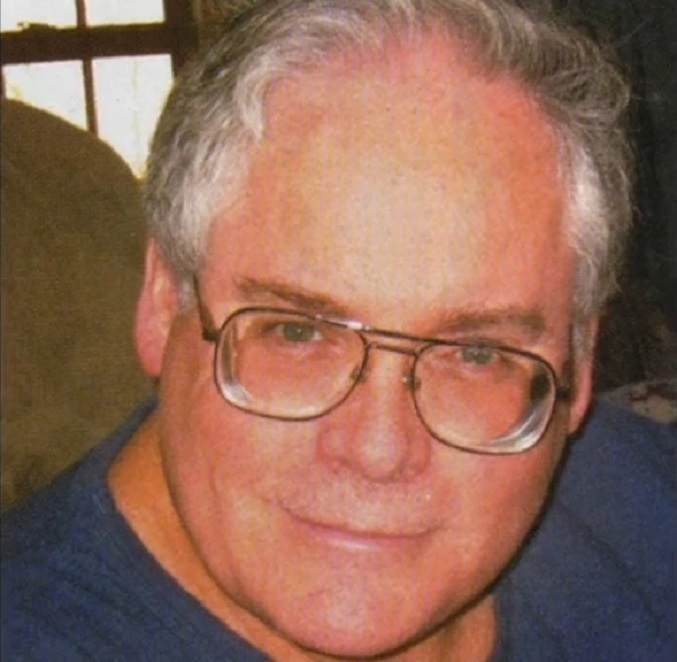

Geoff Johns originally hails from Detroit, Michigan. He attended Michigan State University, where he earned a degree in Media Arts and Film. He moved to Los Angeles in the late 1990s in search of work within the film industry. Through perseverance, Geoff ended up as the assistant to Richard Donner, working on Conspiracy Theory and Lethal Weapon 4. During that time, he also began his comics career writing Stars and S.T.R.I.P.E. and JSA (co-written with David S. Goyer) for DC Comics. He worked with Richard Donner for four years, leaving the company to pursue writing full-time. His first comics assignments led to a critically acclaimed five-year run on the The Flash. Since then, he has quickly become one of the most popular and prolific comics writers today, working on such titles including a highly successful re-imagining of Green Lantern, Action Comics (co-written with Richard Donner), Teen Titans, Justice Society of America, Infinite Crisis and the experimental breakout hit series 52 for DC with Grant Morrison, Greg Rucka and Mark Waid. Geoff received the Wizard Fan Award for Breakout Talent of 2002 and Writer of the Year for 2005, 2006, 2007, and 2008 as well as the CBG Writer of the Year 2003 thru 2005, 2007 and CBG Best Comic Book Series for JSA 2001 thru 2005. Geoff also developed BLADE: THE SERIES with David S. Goyer, as well as penned the acclaimed “Legion” episode of SMALLVILLE. He also served as staff writer for the fourth season of ROBOT CHICKEN. Geoff recently became a New York Times Bestselling author with the graphic novel Superman: Brainiac with art by Gary Frank.
The multi-talented Mark Ryan first became famous as 'Nasir' in Robin of Sherwood (British cult-series from the mid-1980s). He also starred in major musicals in London's West End (like 'Evita'). He has written for DC Comics, and for Harper Collins (The Greenwood Tarot), as well as online publisher ComicMix ('The Pilgrim'). He's also an accomplished swordfighter, responsible for the choreography of the fights on 'Robin of Sherwood' and as sword trainer to Clive Owen and Keira Knightley for 'King Arthur'.

Doug Moench, is an American comic book writer notable for his Batman work and as the creator of Black Mask, Moon Knight and Deathlok. Moench has worked for DC Comics, Marvel Comics, Dark Horse Comics and many other smaller companies; he has written hundreds of issues of many different comics, and created dozens of characters, such as Moon Knight. In 1973, Moench became the de facto lead writer for the Marvel black-and-white magazine imprint Curtis Magazines. He contributed to the entire runs of Planet of the Apes, Rampaging Hulk (continuing on the title when it changed its name to The Hulk!) and Doc Savage, while also serving as a regular scribe for virtually every other Curtis title during the course of the imprint's existence. Moench is perhaps best known for his work on Batman, whose title he wrote from 1983–1986 and then again from 1992–1998. (He also wrote the companion title Detective Comics from 1983–1986.) Moench is a frequent and longtime collaborator with comics artist Paul Gulacy. The pair are probably best known for their work on Shang-Chi: Master of Kung Fu, which they worked on together from 1974–1977. They also co-created Six from Sirius, Slash Maraud, and S.C.I. Spy, and have worked together on comics projects featuring Batman, Conan the Barbarian and James Bond. Moench has frequently been paired with the artist and inker team of Kelley Jones and John Beatty on several Elseworlds Graphic Novels and a long run of the monthly Batman comic.
Pseudonym: William Morrison Joseph Samachson was born to David and Anna Samachson on October 13, 1906 in Trenton, New Jersey. He earned a Ph.D. in Chemistry from Yale at the age of 23. He was an Assistant Professor at the College of Medicine, University of Illinois. He also headed a laboratory in metabolic research at the Veterans Administration Hospital in Hines, Illinois. He wrote books for young people and He also wrote a number of science fiction works (under the pseudonym William Morrison), including two novels published in Startling Stories. He wrote the 1937 pulp title Murder of a Professor and short stories for a number of magazines, including Money from Heaven (1942).[2] He also penned a couple of Captain Future pulp novels c.1941-1942 (under the house name "Brett Sterling"), and had work appear in the science fiction magazine Galaxy. He is believed to have begun working for DC Comics in late 1942, working on comics scripts for characters notably including Batman. He also wrote scripts for comics and characters including Sandman, Green Arrow, Airwave and Robotman, as well as "a string of 17 science-fiction stories in 1955 and 1956". With his wife Dorothy Samachson, he wrote about theater ("Let's Meet the Theatre" and "The Dramatic Story of the Theatre"), music ("Masters of Music" and The Fabulous World of Opera), ballet, archeology (Good Digging) and a number of other titles, including Rome, a Rand McNally "Cities of the World" title.

Dennis "Denny" O'Neil was a comic book writer and editor best known for his work for Marvel Comics and DC Comics from the 1960s through the 1990s, and Group Editor for the Batman family of titles until his retirement. His best-known works include Green Lantern/Green Arrow and Batman with Neal Adams, The Shadow with Michael Kaluta and The Question with Denys Cowan. As an editor, he is principally known for editing the various Batman titles. From 2013 unti his death, he sat on the board of directors of the charity The Hero Initiative and served on its Disbursement Committee.


Andy Diggle is a British comic book writer and former editor of 2000 AD. He is best known for his work on The Losers,Swamp Thing, Hellblazer, Adam Strange and Silent Dragon at DC Comics and for his run on Thunderbolts and Daredevil after his move to Marvel. In 2013 Diggle left writing DC's Action Comics and began working with Dynamite Entertainment, writing a paranormal crime series Uncanny. He is also working on another crime series with his wife titled Control that is set to begin publishing in 2014.

